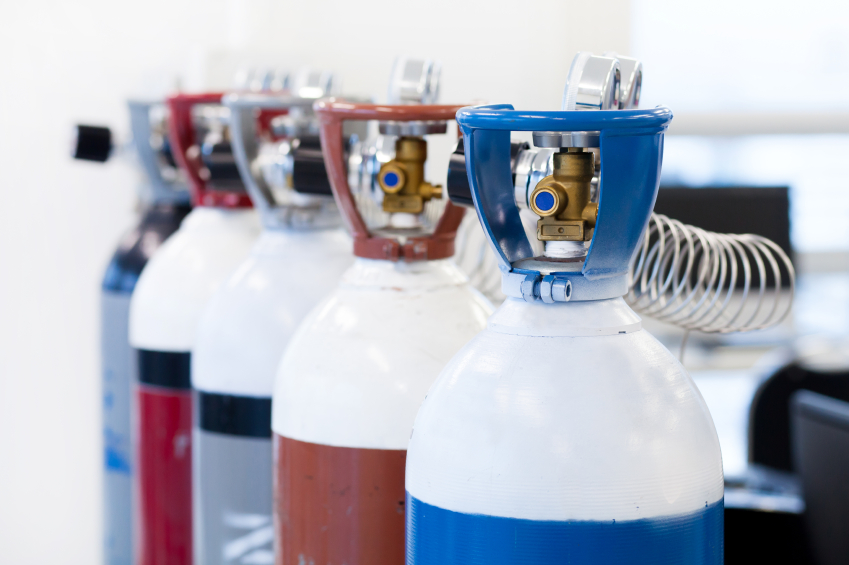Yesterday, we looked at some chemical hazard classifications found in HCS 2012—the Globally Harmonized System of Classification and Labeling of Chemicals (GHS). OSHA and the Society for Chemical Hazard Communication have created a set of Information Sheets intended to help employers understand the new hazard classifications.
 |
We covered chemicals that are corrosive to metals, flammable liquids and flammable solids in part 1. Today, we’ll look at the hazard classifications for gases under pressure, and for simple asphyxiants.
Gases Under Pressure
HCS 1994 had one hazard class/category for compressed gases. HCS 2012 divides pressurized gases into four groups: compressed gases, liquefied gases, refrigerated liquefied gases, and dissolved gases. “Gases under pressure” are, by definition, gases which are contained in a receptacle at a pressure of 200 kPa (kilopascals) or 29 psi (pounds square inch gauge) or more, or which are liquefied or liquefied and refrigerated. Mixtures of gases are classified based on the properties of the mixture.
- Compressed gases are gases which, when under pressure, are entirely gaseous at -50°C (-58°F), including all gases with a critical temperature of less than or equal to 50°C (-58°F). The critical temperature is the temperature above which a pure gas cannot be liquefied, regardless of the degree of compression.
- Liquified gases are gases which, when under pressure, are partially liquid at temperatures above -50°C (-58°F). Liquified gases are further classified based on their critical temperature:
- High pressure liquefied gases have a critical temperature1 between -50°C (-58°F) and +65°C (149°F); and
- Low pressure liquefied gases have a critical temperature1 above +65°C (149°F).
- Refrigerated liquefied gases are made partially liquid because of their low temperature.
- Dissolved gases are gases which, when under pressure, are dissolved in a liquid phase solvent.
Labels for compressed gases, liquefied gases and dissolved gases must carry the signal word “Warning,” the hazard statement “Contains gas under pressure; may explode if heated” and the compressed gas pictogram. Labels for refrigerated liquefied gases must carry the signal word “Warning,” the hazard statement “Contains refrigerated gas; may cause cryogenic burns or injury” and the compressed gas pictogram.
You can find the information sheet for gases under pressure here.
Simple Asphyxiants
Most of the new hazard categories in HCS 2012 are defined by the Globally Harmonized System for Hazard Classification (GHS). The simple asphyxiant category, in contrast, is not in the GHS; it was created and defined by OSHA. The same is true of pyrophoric gases and combustible dusts.
A “simple asphyxiant” is defined as a substance or mixture that displaces oxygen in the ambient atmosphere, and thus causes oxygen deprivation in those who are exposed, leading to unconsciousness and death. Simple asphyxiants are of particular concern in enclosed spaces, where they cannot dissipate. Some examples of simple asphyxiants include: nitrogen, helium, neon, argon, krypton, and xenon.
There is no test method for evaluating and classifying simple asphyxiants; OSHA recommends using an expert’s judgment to evaluate evidence such as human experience, information from similar substances, and other pertinent data.
Labels for simple asphyxiants must carry the signal word “Warning,” and the hazard statement, “May displace oxygen and cause rapid suffocation.”
The information sheet for simple asphyxiants can be found here.
Need more information on OSHA’s new hazardous chemical classifications? Safety.BLR.com can help you sort it out.
